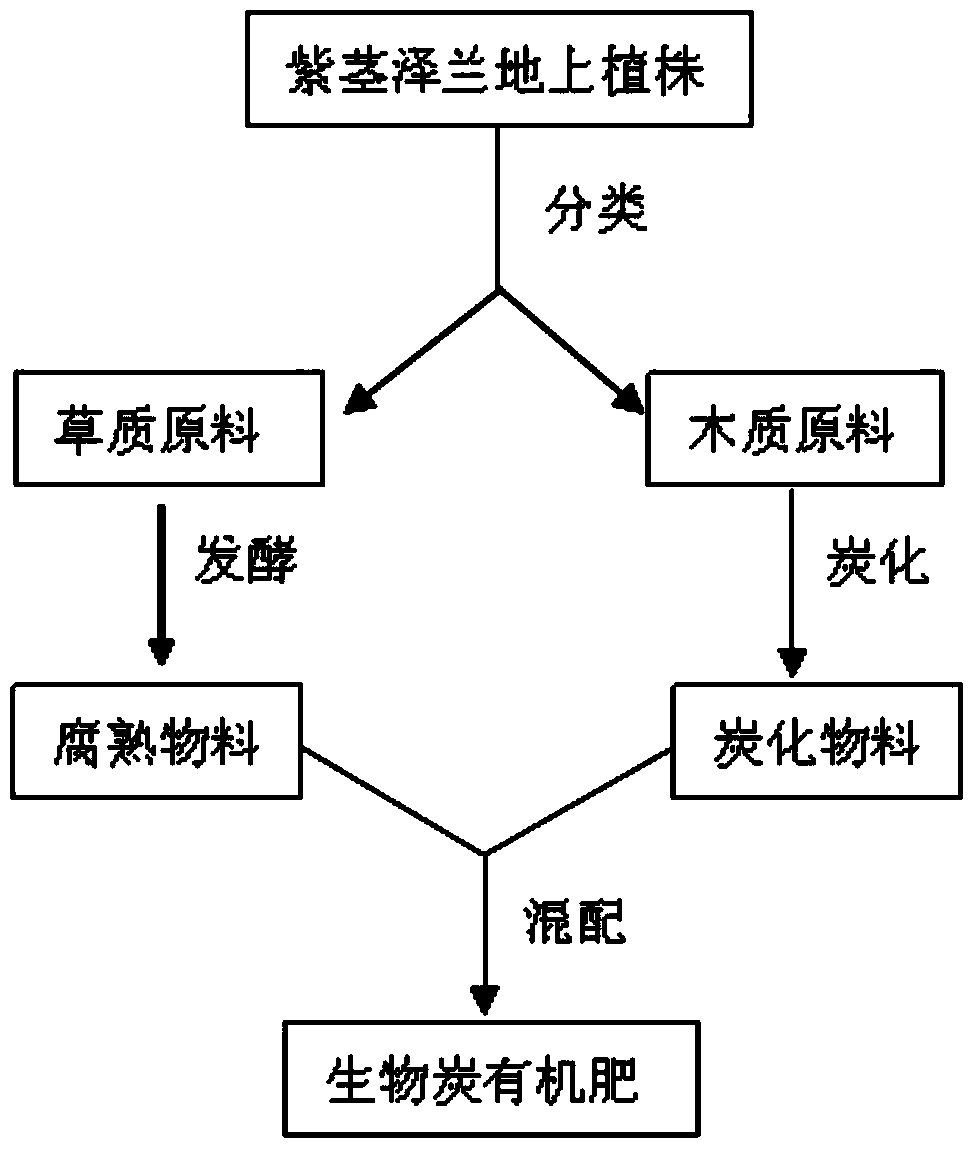Resource utilization method of ageratina adenophora
A technology of resource utilization of Eupatorium adenophorum, applied in the field of agricultural soil and fertilizer, can solve the problems of high degree of lignification of stems, difficulty in crushing, increased production cost and production cycle, etc., to achieve improved soil structure, great potential ecological benefits and The effect of economic benefits
- Summary
- Abstract
- Description
- Claims
- Application Information
AI Technical Summary
Problems solved by technology
Method used
Image
Examples
Embodiment 1
[0051] The ground plants of Eupatorium adenophorum were collected on the side of the road in Miyi County, Panzhihua City on May 2, 2012. According to the lignification degree of the plants on the ground Eupatorium adenophorum, they were cut at 3 / 4 of the stem, and the lower part of the stem was 3 / 4 As wood material, the upper quarter of the stem is used as grass material. The cutting operation was mainly completed by the guillotine knife, and a total of 10 tons of grass-based raw materials and 40 tons of wood-based raw materials were obtained.
[0052] The 10 tons of grass-based raw materials are crushed into 0.5-1cm fines in the organic fertilizer production workshop, and they are moved to a long fermentation tank with a width of 2m and a height of 1.5m, and mixed with the high-temperature microbial strain Rw rot promoter (when operating At 3 pm, the room temperature is 25.6℃), add clean water to make the water content 58%, and then use the organic fertilizer fermentation turni...
Embodiment 2
[0057] The ground plants of Eupatorium adenophorum were collected on the side of the road in Miyi County, Panzhihua City on May 2, 2012. According to the lignification degree of the plants on the ground Eupatorium adenophorum, they were cut at 3 / 4 of the stem, and the lower part of the stem was 3 / 4 As wood material, the upper quarter of the stem is used as grass material. The cutting operation was mainly completed by the guillotine knife, and a total of 5 tons of grass-based raw materials and 18 tons of wood-based raw materials were obtained.
[0058] Crush 5 tons of grass-based raw materials in the organic fertilizer production workshop into 0.5-1cm fines, and move them to a long fermentation tank with a width of 2m and a height of 1.5m, and mix with the high-temperature microbial strain Rw rot promoter (during operation At 2 pm, the room temperature is 28.5℃), add clean water to the moisture content of 56%, and then use the organic fertilizer fermentation turning machine to st...
Embodiment 3
[0063] The ground plants of Eupatorium adenophorum were collected on the side of the road in Miyi County, Panzhihua City on December 5, 2012. According to the lignification degree of the plants on the ground Eupatorium adenophorum, they were cut at 2 / 3 of the stem, and the lower part of the stem was 2 / 3 As wood material, the upper 1 / 3 of the stem is used as grass material. The cutting operation is mainly completed by the guillotine, and a total of 10 tons of grass-based raw materials and 30 tons of wood-based raw materials have been obtained.
[0064] The 10 tons of grass-based raw materials are crushed into 0.5-1cm fines in the organic fertilizer production workshop, and they are moved to a long fermentation tank with a width of 2m and a height of 1.5m, and mixed with the high-temperature microbial strain Rw rot promoter (when operating At 3 pm, the room temperature is 26.2℃), add clean water to the water content of 55%, and then use the organic fertilizer fermentation turning ...
PUM
| Property | Measurement | Unit |
|---|---|---|
| Diameter | aaaaa | aaaaa |
Abstract
Description
Claims
Application Information
 Login to View More
Login to View More - R&D
- Intellectual Property
- Life Sciences
- Materials
- Tech Scout
- Unparalleled Data Quality
- Higher Quality Content
- 60% Fewer Hallucinations
Browse by: Latest US Patents, China's latest patents, Technical Efficacy Thesaurus, Application Domain, Technology Topic, Popular Technical Reports.
© 2025 PatSnap. All rights reserved.Legal|Privacy policy|Modern Slavery Act Transparency Statement|Sitemap|About US| Contact US: help@patsnap.com


